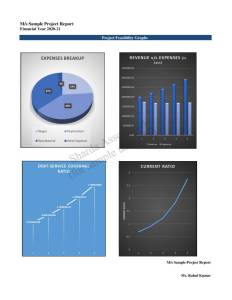Project Report For Soya Products
Introduction
The project report for Soya Products is as follow
Soya Products commercial exploitation in India dates back nearly four decades. During this time, the crop has grown at an unprecedented rate in both area and output.
The introduction of soya products has resulted in increased cropping intensity and, as a result, increased profitability per unit land area. Soya products will continue to be a key rainfed oilseed crop in India.A variety of bred types have resulted in this extraordinary development.
According to modelling studies and on-farm demonstration, the rainfed potential of soya products in India with current varieties is around 2.1 t/ha, compared to the national average productivity of just 1.2 t/ha. As a result, huge yield gaps occur between potential and actual yields obtained by farmers.
Closing this yield gap might result in a doubling of soya products production. So far, the National Agricultural Research System has been effective in addressing the research needs of the agricultural and industrial communities.
More increases in soya products grain yield and oil quality are conceivable via the adoption of new research techniques and the application of current biological breakthroughs.
Soya products (Glycine max L. Merril) is the world’s most significant seed legume, accounting for 25% of worldwide edible oil and almost two-thirds of global protein concentrate for animal feeding.
Soya products meal is an important component in poultry and fish diets. Soya products production and use may be traced back to the beginning of China’s agricultural period.
Its use for human ingestion is mentioned in Chinese medicinal collections reaching back 6,000 years. For millennia, soya products have meant meat, milk, cheese, bread, and oil to the people of China, Japan, Korea, Manchuria, the Philippines, and Indonesia.
This might be why it has gained nicknames like “Cow of the Field” or “Gold from Soil” in these nations. Soya products protein is referred to be a complete protein due to its amino acid makeup. It is widely recognised for its nutritional benefits in heart disease and diabetes.
Market Potential Of Soya Products
The India Soy Beverages Market is anticipated to expand at a CAGR of 4.8 per cent during the forecast period (2020-2025). The market is largely driven by an increase in the number of customers seeking non-dairy beverage options, which has resulted in significant growth in the demand for soy milk beverages.
Furthermore, new food production technologies and new soybean varieties result in novel tastes, creating a rivalry with cow’s milk and dairy products.
Furthermore, the many health advantages of soy milk, such as lower cholesterol and reduced risk of heart disease and the growing number of health-conscious customers, are boosting the market.
Soybean is a legume in the pea family that is high in protein and other important minerals. It is widely regarded by vegans all over the globe for its ability to offer an appropriate quantity of protein while causing no harm to the environment.
Protein is expected to make up half of a single soybean pea, which is plenty for vegetarian athletes who require amino acids for muscle repair.
East Asian countries, such as Japan, are regarded as some of the world’s healthiest and have used soybean from time immemorial.
They have requested that soybeans be included in their meals to live a healthy lifestyle and maintain an active body. Animal feed and pet food are the two most important applications for soybeans.
During the projection period of 2019-2025, this category is predicted to expand at a standard CAGR of 3.2 per cent -4.3 per cent.
Project Report Sample On Soya Products
Need Help?
Create 100% Bankable Project Report





